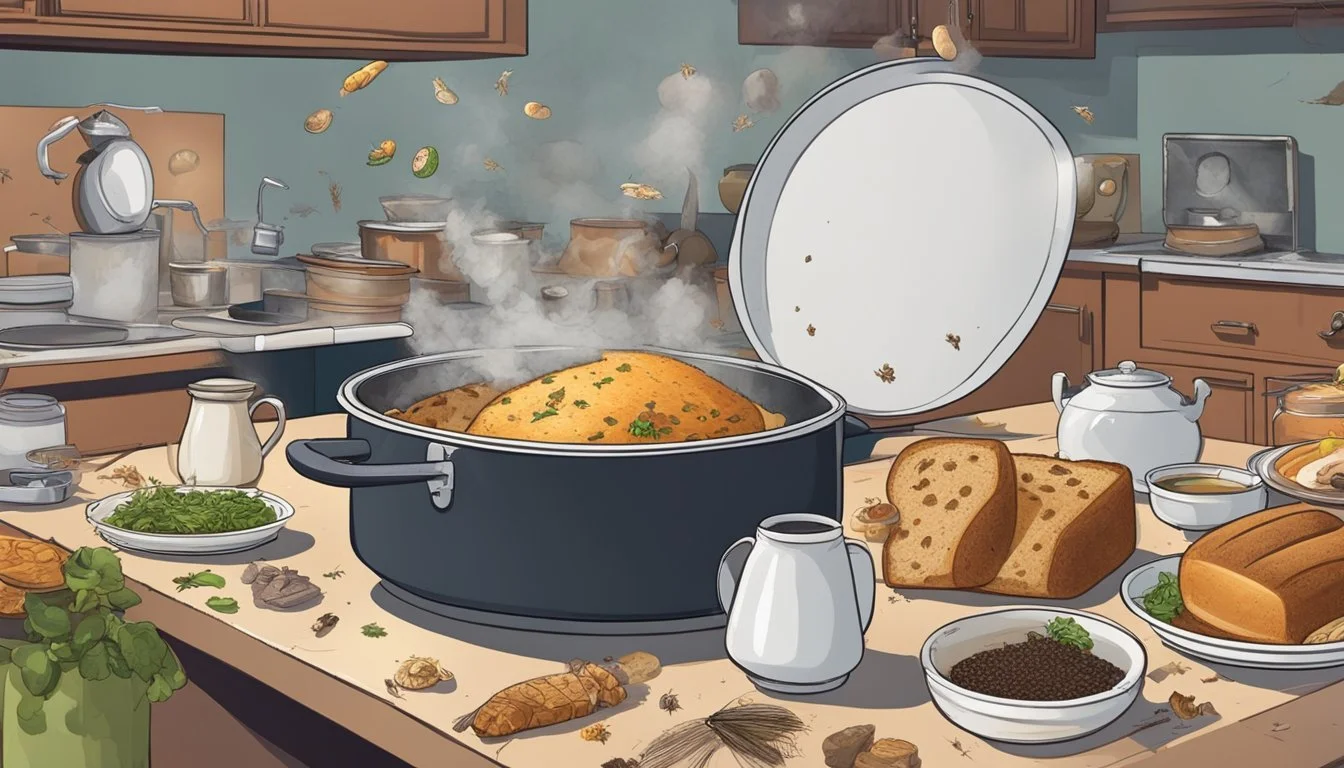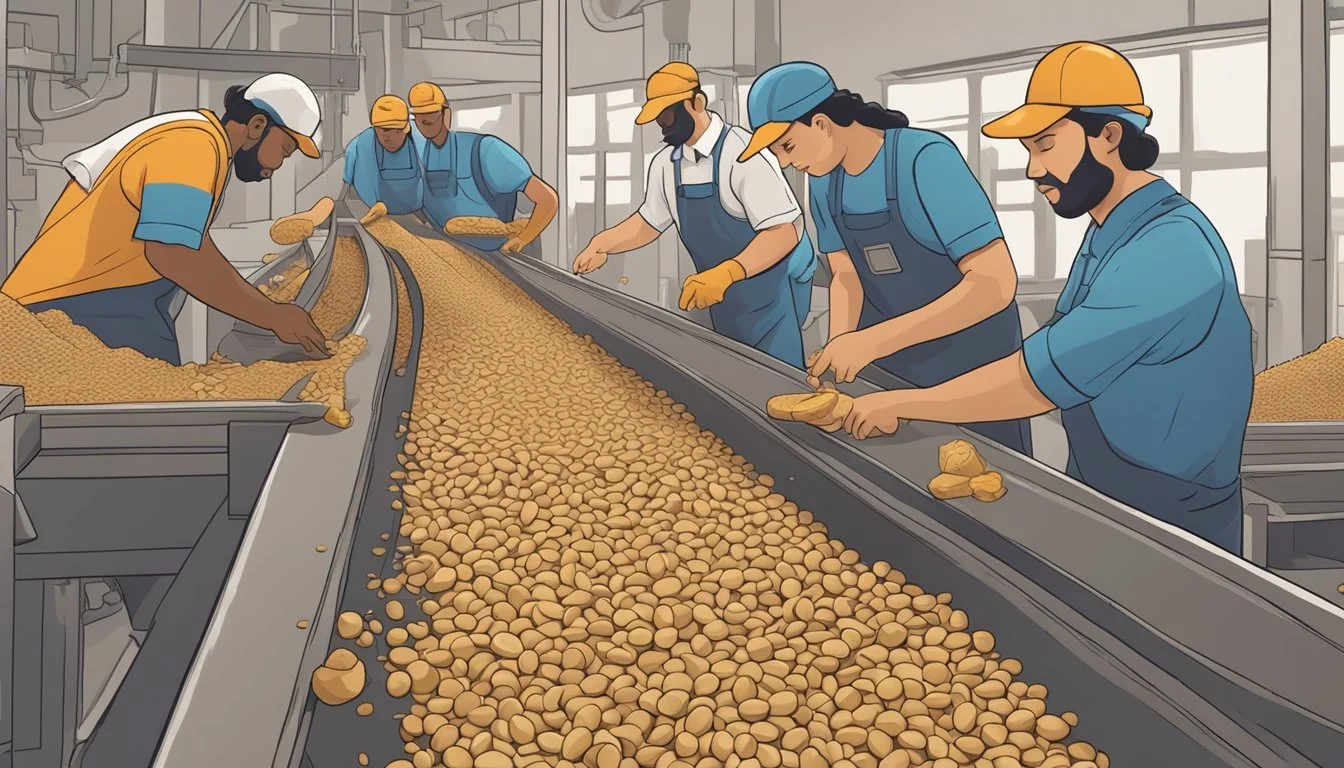10 Catastrophes Caused by Food
Unveiling Disasters Linked to Our Diet
Food, a fundamental necessity for human survival, occasionally becomes the root cause of catastrophic events. These disasters emerge from a variety of scenarios, ranging from industrial accidents to geopolitical conflicts that disrupt food supplies.
Understanding these catastrophes underscores the complex relationship between food production, distribution, and consumption. Examining these events helps to grasp the potential for large-scale impacts on communities and economies when food-related calamities occur. The article will explore ten notable instances where food played a central role in significant disasters.
1) The Great Potato Famine
The Great Potato Famine, also known as the Irish Potato Famine, was a catastrophic period in Ireland between 1845 and 1852. The disaster was triggered by a potato disease known as late blight, caused by the water mold Phytophthora infestans.
This disease devastated the potato crops, which were a staple food in Ireland. Over one million people died due to starvation and related diseases. The famine also forced another million people to emigrate in search of better living conditions.
The Great Hunger, as it is sometimes called, had profound effects on Irish society. Families were torn apart as they migrated to places like the United States and Canada. Many of those who stayed behind faced dire economic and social conditions.
This period left lasting marks on the Irish population and diaspora. The famine's impact is still remembered and discussed in historical and cultural contexts today.
2) The Melamine Milk Scandal in China
The 2008 Melamine Milk Scandal in China represents one of the gravest food safety incidents. Sanlu Group, along with other companies, was found to have adulterated milk and infant formula with melamine.
Melamine, a chemical used to artificially boost protein content, caused severe health issues. Infants developed kidney stones and urinary problems. Reports state that six babies died, and approximately 300,000 fell ill.
The scandal exposed significant flaws in China’s food safety regulations. Milk-collecting stations were identified as points where melamine was added to diluted raw milk.
Public outrage prompted extensive reforms. China faced international pressure to upgrade its regulatory standards. This crisis highlighted the urgent need for tighter controls in the dairy sector.
3) The Salmonella Peanut Butter Outbreak
In recent years, peanut butter has been associated with multiple Salmonella outbreaks. One notable event occurred in 2022 when Salmonella Senftenberg was linked to Jif brand peanut butter. The FDA, along with the CDC and various state and local partners, investigated this multistate outbreak.
By May 2022, the outbreak had affected individuals across 12 states. The infection rates ranged widely in age, with victims as young as infants and as old as 85. This incident underscored the vulnerability of a broad demographic to foodborne illnesses.
Earlier, in 2008-2009, another significant outbreak of Salmonella Typhimurium was linked to peanut butter. This outbreak resulted in 714 reported cases across 46 states. Tragically, it also caused nine deaths. The scale of this event highlighted the severe public health risks associated with contaminated food products.
These incidents have prompted increased vigilance and regulatory scrutiny in the food industry. They have also led to greater public awareness about the risks of contamination and the importance of food safety practices. The recurring nature of such outbreaks emphasizes the need for continuous monitoring and improvement in food safety standards.
4) The 1954 Mass Poisoning in Japan
In 1954, Japan experienced a mass poisoning event that shocked the nation. This incident occurred in the town of Morinaga and involved arsenic-contaminated dried milk formula.
The contaminated product was distributed widely and consumed by many infants and young children. It resulted in severe health consequences, including numerous fatalities.
Arsenic, a highly toxic substance, caused acute poisoning symptoms such as vomiting, diarrhea, and abdominal pain among the victims. Long-term effects included developmental delays and other serious health issues.
The tragedy highlighted the urgent need for stringent food safety regulations and spurred changes in manufacturing and quality control processes in Japan. This incident remains a significant example of the impact of foodborne toxins on public health.
5) The 1984 Rajneeshee Bioterror Attack
In 1984, The Dalles, Oregon, experienced the first and largest bioterror attack in U.S. history. Members of the Rajneeshee cult, under the leadership of Ma Anand Sheela, deliberately contaminated salad bars at ten local restaurants with Salmonella.
The aim was to incapacitate voters to sway the upcoming Wasco County elections.
Over 750 people fell ill from the contaminated food. The attack was part of a broader strategy by the Rajneeshee community to exert control over local political processes. The cult had earlier purchased a large ranch near The Dalles to establish their commune.
The incident highlighted the vulnerabilities in public health and food safety systems, leading to significant concerns about bioterrorism. The consequences of the attack were serious but did not result in any fatalities. The perpetrators were later prosecuted, and the incident became a crucial case study in bioterror preparedness.
This event serves as a stark reminder of the potential dangers posed by intentionally contaminated food sources and the need for vigilant public health safeguards. It underscores the impact of targeted bioterrorism using everyday items like salad bars to achieve malicious ends.
6) The Horse Meat Scandal
In January 2013, Europe faced a significant food industry crisis. Foods labeled as containing beef were found to contain undeclared horse meat. Some products had up to 100% horse meat, shaking consumer confidence.
The scandal initially surfaced in Ireland and quickly spread across Europe. Major retailers like Tesco, Lidl, and Aldi had to withdraw millions of burgers from their shelves.
The revelation highlighted the vulnerabilities in food supply chains. It became clear that mislabeling and lack of transparency were widespread issues.
The European Union took steps to address the scandal. Origin labeling regulations were reviewed and expanded to cover unprocessed meats and single-ingredient foods.
The horse meat scandal served as a wake-up call for regulators and consumers. It underscored the need for stringent food safety and accurate labeling.
7) The Jack in the Box E. Coli outbreak
In 1993, Jack in the Box faced a significant food safety crisis that shook the fast-food industry. The outbreak involved the bacterium Escherichia coli O157, which contaminated beef patties sold at the chain's locations.
This incident led to severe consequences. Four children lost their lives, and 732 individuals were infected across four states—California, Idaho, Washington, and Nevada. The outbreak showed the critical need for rigorous food safety standards.
The contamination was linked to undercooked beef patties. Reports indicated that some meat was not cooked to the required 155 degrees Fahrenheit, which allowed the harmful bacteria to thrive.
After the outbreak, significant changes were implemented in the food industry. The USDA strengthened meat inspection protocols, and the Hazard Analysis and Critical Control Points (HACCP) system became crucial in preventing such incidents.
The Jack in the Box outbreak remains a landmark case in food safety history. It highlighted the dangers of E. coli O157 and spurred changes that have improved food safety practices.
8) The 2011 Listeria Outbreak
The 2011 United States listeriosis outbreak was a significant public health crisis. It resulted from contaminated cantaloupes linked to Jensen Farms in Holly, Colorado. The outbreak affected 28 states and led to 33 deaths, making it one of the deadliest foodborne illness outbreaks in U.S. history.
The first recorded case occurred on July 31, 2011. Listeria monocytogenes, the bacterium responsible for listeriosis, was identified as the contaminant. In total, 147 confirmed cases were reported.
Officials traced the source of contamination to unsanitary conditions at the farm. Such conditions contributed significantly to the widespread distribution of the tainted cantaloupes.
The outbreak highlighted the need for stringent food safety practices and regulatory oversight. The scale and severity of the incident emphasized the potential risks associated with fresh produce.
9) The Great Chicago Milk Scandal
In the mid-19th century, Chicago faced the notorious Great Chicago Milk Scandal. The city’s dairy industry became infamously linked with unsafe practices that endangered public health. Milk from swill dairies, which fed cows on alcohol by-products, contained harmful contaminants.
This adulteration led to widespread illness, especially among children. Unscrupulous dairymen added substances like chalk and water to milk to increase volume and improve appearance. These additives often resulted in severe health consequences for consumers.
Public outcry eventually forced city authorities to investigate. Inspections revealed the extent of the adulteration and prompted new regulations. This scandal played a crucial role in raising awareness about food safety standards and the importance of strict regulatory oversight in the dairy industry.
10) The 1981 Spanish Toxic Oil Syndrome
In 1981, Spain faced a devastating health crisis known as the Toxic Oil Syndrome (TOS). This disaster stemmed from the consumption of improperly refined rapeseed oil, which was purportedly sold as olive oil.
TOS caused severe musculoskeletal issues, characterized by intense myalgias and muscle cramps. It also led to significant respiratory problems, including pulmonary infiltrates and eosinophilia.
The syndrome impacted about 25,600 individuals. Tragically, over 4,000 people died within a few months of the outbreak. Many survivors were left with long-term disabilities.
This incident highlights the critical importance of food safety regulations. The fraudulent selling of the contaminated oil led to one of the worst food poisoning outbreaks in Spanish history, leaving a lasting mark on public health and safety protocols.
Historical Perspective
This section explores key historical food-related disasters and their significant economic and social repercussions.
Notable Food-Related Disasters in History
The Irish Potato Famine (1845-1852) left an indelible mark on history. The potato blight caused widespread crop failure, leading to the deaths of approximately one million people and mass emigration. This famine drastically reduced Ireland's population and reshaped its social structure.
The Global Food Crisis of 1972-1975 was another devastating event, primarily triggered by severe droughts in the Sahel region of Africa. The crisis resulted in an estimated two million deaths. Economic mismanagement and adverse weather conditions exacerbated the famine, causing widespread suffering and instability.
In 2003, the Gunnedah Pet Food Explosion in Australia didn't result in mass fatalities but caused extensive damages estimated at AUD $10 million. This disaster showcased the potential hazards within food manufacturing industries and affected the town's economy and social fabric.
Economic and Social Impact of Food Catastrophes
Food-related disasters often have rippling economic effects. During the Irish Potato Famine, the agricultural collapse led to skyrocketing food prices. Many farmers lost their livelihoods, and the resulting economic strain forced countless families to migrate, seeking better opportunities abroad.
The Global Food Crisis of 1972-1975 highlighted the vulnerabilities in global food supply chains. The affected regions experienced severe economic downturns. Many countries faced political instability as governments struggled to manage the crisis, leading to increased social unrest.
Issues arising from these catastrophes often persist for years, affecting multiple generations. Families displaced by these events encounter long-term hardships, such as loss of cultural heritage and community disintegration. Additionally, the focus on emergency relief during such crises often diverts resources from long-term development projects, impacting overall societal growth.
Causes of Food Catastrophes
Food catastrophes often result from a combination of natural and human-induced factors. Natural disasters can severely disrupt food supplies, while human activities can lead to shortages and wastage.
Natural Disasters and Their Impact on Food Supply
Natural disasters, such as floods, droughts, and earthquakes, can devastate food production and distribution networks. For example, the floods in Libya disrupted food supply chains, making it difficult for tens of thousands to access food. Droughts, like those that have drastically reduced Lake Chad, often lead to water scarcity, which impacts crop yields and livestock, thereby reducing food availability.
Earthquakes can destroy infrastructure critical for food storage and distribution, such as granaries and transportation routes. Wildfires can ravage agricultural lands, eliminating essential crops and displacing farming communities. These events not only reduce the immediate availability of food but also lead to long-term economic challenges that hinder recovery efforts.
Human Activities Leading to Food Shortages
Human activities such as conflict, economic policies, and mismanagement often exacerbate food shortages. Wars and conflicts disrupt farming activities, displace populations, and destroy resources necessary for food production. Poor economic decisions can result in skyrocketing prices for essentials like fertilizers and fuel, making food production unfeasible for farmers.
Food wastage is another critical issue. Around one-fifth of the food produced for human consumption is lost or wasted, amounting to about $1 trillion annually. Mismanagement at various stages of the food supply chain—production, storage, and distribution—leads to significant losses. Addressing these human-caused factors is crucial for sustainable solutions.
Modern-Day Issues
Contemporary challenges in food security are largely influenced by climate change and political instability. These factors significantly impact food availability and distribution worldwide, exacerbating hunger and malnutrition.
Climate Change and Food Security
Climate change has led to more frequent and severe weather events, such as droughts, floods, and storms. These events devastate crops and reduce agricultural productivity. Rising temperatures also affect crop yields, particularly staples like wheat, maize, and rice.
Increased CO₂ levels and changing weather patterns complicate farming practices, making it harder to predict seasons and grow food efficiently. These challenges force farmers to adapt rapidly, often with limited resources.
Small-scale farmers in developing countries are especially vulnerable. They lack the infrastructure and financial means to implement effective climate adaptation strategies. This situation results in lower crop yields and higher food prices, affecting global food security.
Political Instability and Its Effects on Food Distribution
Political instability, including conflicts and economic crises, hinders food distribution. Wars and civil unrest disrupt supply chains, making it difficult to get food to regions in need.
In countries like Nigeria, where conflicts are prevalent, millions face severe food insecurity due to interrupted farming and supply lines. Governments in these regions often lack the capability to provide adequate aid.
Inflation and rising food prices, driven by unstable political environments, further exacerbate the situation. Economic turmoil makes basic food items unaffordable for many people, deepening hunger and malnutrition rates.
Additionally, political instability can lead to sanctions and trade restrictions. These policies restrict the import and export of essential goods, further disrupting food supply chains and broadening the scope of food crises.






